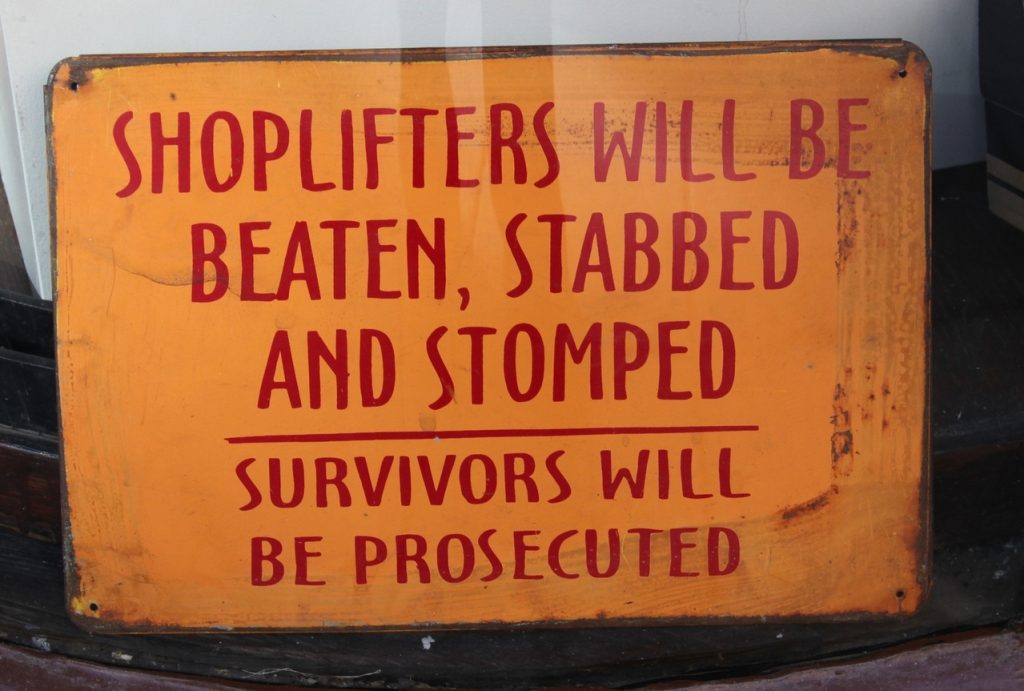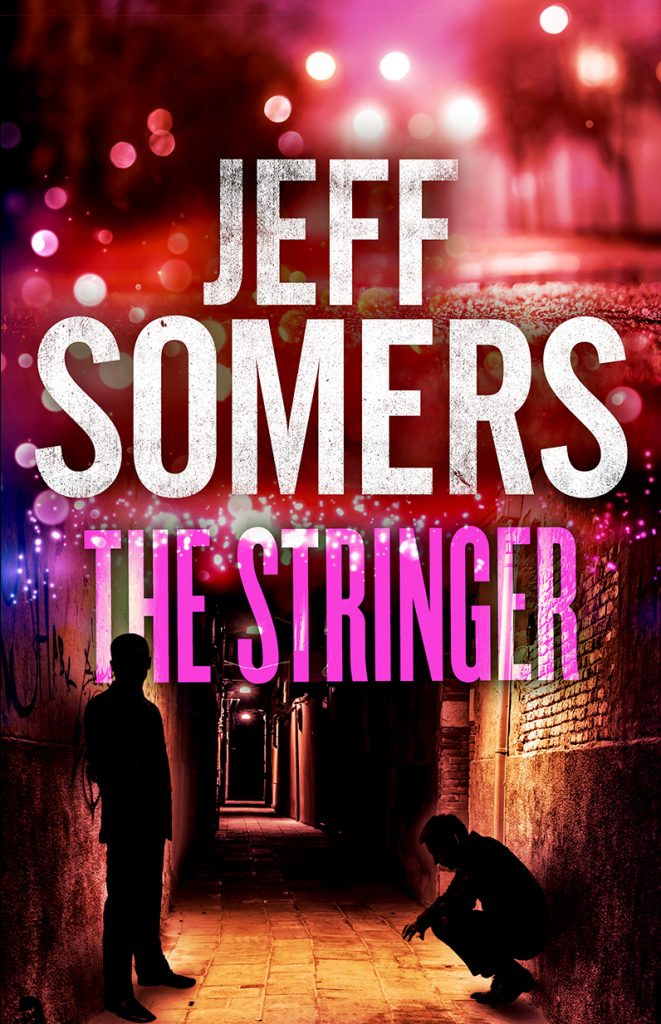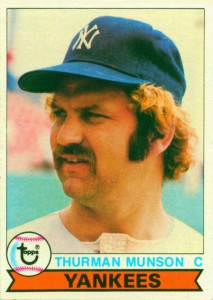
The Urban Bizarre
I wrote this story in 1993, and in 2004 it appeared in the anthology The Urban Bizarre, published by Prime Books and edited by Nick Mamatas. It was actually one of two of my stories that appeared in that anthology, which I can only assume meant Nick had space to fill :-).
It’s disorienting to read something you wrote so long ago. Very clearly inspired by some of the awful parties I attended in my college years, it also sports the gross nihilism I pretended to as a younger man.
The title comes from a Too Much Joy song, “What It Is,” which contains the line “Congratulations, James, now you’re a dick for eternity!”
I used to know this girl named Brenda, but that was before Rodney killed her, almost completely by accident. A big-boned redhead with horrible pale skin that seemed to break out into sympathetic rashes with alarming regularity, Brenda was a loud, outgoing girl that didn’t let the fact that no one liked her slow her down any. I guess someone liked her. Someone kept inviting her to the parties. Looking back, I suppose it was Rodney, since he’d been sleeping with her.
At the time, though, I didn’t know that. All I knew was that this tall pale girl with bad teeth and the loudest voice in the world kept showing up at the house and chasing everyone away. She talked to all of us with big hugs and excited squeals, as if we were old, old chums reunited by chance, no love lost. We’d squirm in her grasp until she took her eyes off us, and slip away one by one to grouch in private until she was all alone and had to find new victims.
Eventually she’d disappear, but not until drinking enough to awe even Fat Billy, who could sink most mortals, his liver glowing softly.
The night I’m thinking of, however, she didn’t disappear, didn’t leave us to the relative peace and quiet of our little lives, although I did get a few minutes of quiet relief when I thought she had. That night, though, Rodney came hooting down the stairs, tucking his shirt in and grabbing me in tight-sweat desperation.
####
Let me tell you a little about Rodney. He was half Black and half Puerto-Rican and all asshole, one of those sweaty heart-attacks for whom life was a never-ending series of surprises, usually unpleasant. He had a bug-eyed stare that had a remarkable steadiness, it latched onto you and didn’t let go until someone waved something bright at him. I don’t know what he had at the center of his life, what kept him waking up in the morning, I didn’t know him that well and didn’t feel the loss at all. It had something to do with drinking and his dog Percy, though, I knew that because they were the only things he gave a shit about.
He worked as a bartender at a strip joint, which was good money but bad health, because he stumbled home in a horrible mess of intoxication and lust, his little bug eyes nervous, gasping in big gulps of air. he’d rush into the living room and sit on the edge of the couch next to me, his hands clasped between his knees and the stale living-room air squeezing in between his teeth. Sometimes I waited a few minutes for him to speak up, sometimes I couldn’t take it and asked him outright.
“Those girls……” he would say with a dull, hollow haunt in his face.
We would all nod and ignore him, then, having heard it all before. That was Rodney. Rodney didn’t make love, he banged. It was sweaty, uncomfortably desperate act of drool for him. We know this because we lived with him between tissue-thin walls and he had no concept of how much noise he made, screaming, begging, cursing.
He was banging this girl Brenda and God knows why it wasn’t obvious to me. Part of it was the fact that you stop being interested in your room-mate’s sex life pretty fucking quick. And no one could ever hear the girls over Rodney’s hopeless bellows. We all had our own problems, coming up with one-fourth rent every month being chief among them. Rodney just didn’t rank.
####
Just like every night, it seemed, a tape-loop, eternity, that night we’d thrown a party. Rodney’d gotten Brenda up into his room, although no one noticed. Things were sweaty and except for me, who was eagerly driving people away with snarling insults and steely glares, no one was paying anyone else any attention unless sex was involved, somehow. I was standing by the front door, sweating buckets in the heat made worse by hundreds of leech-like people struggling to bore their maws into us. I was demanding that newcomers know names before I let them in, picking fights and talking with this brunette girl who wasn’t drinking. She insulted me back with pretty sobriety. We kept blowing smoke into each other’s faces, and I was falling in love with her.
I felt the sweaty paw on my shoulder and turned to find Rodney at my elbow, half dressed and ugly.
“C’mon upstairs, Lenny. I got something you gotta see.”
I squinted at him suspiciously. Beer did nothing for him, just made him grey and pasty-faced. I tried to put on a friendly ‘not-now’ face. “Fuck off.” I grinned, patting him on the shoulder. It was my job to torture these people. It was why I was here. They thought they were having fun. It was up to me to prove them wrong.
“No, Len,” he hissed, “you gotta.”
I looked back at him, this puffy leech which had inserted itself into me. There was doom about him, the clinging scent of emergency. There was no way he was going to let me get back to wooing the wonderfully abrasive girl before I had a peek into his private life, so I waved him on and followed. I just hoped he wasn’t having a mid-life crisis or something.
Everybody was having a mid-life crisis. Every other night some poor joker was up in his room weeping for his lost youth or something. It spread like a disease, from room to room, identity crisis again and again, grown men trying to find themselves. You could hear the wailing even downstairs sometimes, but this particular night I was lucky, in one small sense. Rodney wasn’t having a midlife crisis, which was good, because I was no good at talking people down from ledges. I got bored too easily. I wasn’t much of a friend, but I was fun at parties so everyone kept me around. I even think they were a little afraid of me, which was why I hated them all, the spineless shits. They probably wanted me to move out, but were too scared, and I hated cowards.
####
Rodney’s room was upstairs buried next to the bathroom, which was safest for all involved. We paused in the doorway, staring at her like she was just an ugly rumor, a joke in bad taste staring blindly up at the ceiling with bland, dusty eyes, one bra strap pushed off her pale shoulder.
I eyed Rodney with a discomfort born of any number of truths but held together by the uneasy realization that I was in a murderer’s midst. Neither of us would say it, but the possibility hung there anyway, the unutterable image in our minds, that Rodney had fucked her to death.
He stood there like a behemoth, unsure what to do with his hands. I turned and shut the door. I leaned against it and put my hands in my pockets, just to show I knew what to do with my hands.
“You crazy Fuck,” I said conversationally, “you’re going to jail.”
That wasn’t what he wanted to hear. His sallow face crumpled up into a gibbering hole of terror, and he started to pace around his room in a sweat, muttering curses under his breath, until finally exploding.
“I can’t do that, Lenny!” he hissed, grabbing my shirt and pulling re close. “You gotta help me!”
I eyed him with hopeless sarcasm. I put an arm around him and led him on a spiral around his room,
“Let me spell out a few quick ones, okay, Rod? You’re going to jail. You’re going to have a new friend named Bubba or Pinky or something who’s going to try to do to you what you just did to Brenda.” I paused to glance reflectively at her. I was enjoying myself.
Rodney quivered there in my arms, ready to just burst into tears. I was terrified that he might start bawling. Completely terrified.
“Now,” I went on, “if someone came up to you and asked you to go to jail too and get fucked to death by some guy named Tiny, you’d tell him to go to hell, wouldn’t you?”
He paused. “Well —”
“Go to hell, Rodney.” I snapped, leaving him alone by the bed.
####
I was fighting my way through the crowd around the bathroom, trying to get away from Rodney’s inevitable pursuit, when I saw Fat Billy fighting his way toward the toilet. Fat Billy was three hundred pounds of heaving, sweating flesh and I’d seen him throw up once and once was all I needed to be very afraid of seeing it again.
I was caught between two hells, and in the end I let Fat Billy go by and so got caught by Rodney, who had a trickle of spittle lolling from the corner of his mouth. From the bathroom, Fat Billy drowned out the crowd, because Fat Billy howled in sheer terror or something whenever he threw up. We couldn’t hear a goddamn thing over the pitiful wailing driving everyone away, so we retreated back into Rodney’s room and shut the door again. I stood defeated before him, a victim of fate.
“All right,” I sighed, “Let’s think.”
Rodney collapsed in relief, and I Just patted him on the head and told him to shut up. In the background Fat Billy screamed so you’d think blood was shooting out of his nose as he knelt on the damp and scabby bathroom floor, and I had no doubt he’d driven everyone else away. I lit a cigarette and ashed on Rodney’s rug, staring at this fat and flaccid body still staring up at the dull ceiling. I was curious as to what had happened, but was afraid Rodney might actually start talking if I asked him about it.
“Well,” I said finally, “we’ve got to get her out of your room.”
This was not so easily done. Fat Billy had cleared the floor, so me and Rodney carried her milky white and soggy to the stairs without a problem. The stairs, however, had recently seen a frightened mob fleeing Fat Billy, and glazed strangers stared back at me with barely concealed apathy and dislike.
“Move aside, you bastards, I live here.” I growled.
No one paid me any attention. I glanced back at Rodney and pulled our luggage upright, her head rolling brokenly against my shoulder.
“Watch out everybody,” I said with an eat-shit grin, “I think she’s gonna puke.”
They studied her, judged relative distance and looked me in the eye to see if I was the sort to stand by and let friends puke on total strangers. After a moment a shallow path was opened grudgingly and we carried her down, only dropping her once.
The sons of bitches were everywhere, so we couldn’t just carry her outside and be seen disposing of a body. I snarled back at Rodney every chance I got, the fucker, pushing him into gibbering despair. We deposited her on the couch and put some distance between us.
I walked around and lied a lot, spinning stories and assuming names. Mostly, these parties were just big suckfests, the guys sucking up to the girls in hopes that, on a good warm night with cold beer and the right vibe, the girls would end up sucking off the guys. It never really happened that way, but that’s the way I described them to people when I wasn’t out to make friends, which I usually wasn’t when my housemates opened up our domicile to every bride-and-tunnel ass who could follow directions from Manhattan.
Brenda became the center of attention, wearing a pair of my sunglasses and sprawled in an open invitation on the couch. Rodney stared at her from the corner of the room as if he wished he’d at least gotten to come before she kicked off, and all the other beer-dicks followed his stare like lemmings eyeing a ledge. She was the focus of unbridled lust, a heady vision of fading perfume and one bra-strap slipped over a pale and paling shoulder.
####
Kent Booker, the skinny little shit, must have seen me carry her in, because he horned in on me to scam on her, pinning me against the wall with one finger and breath that would have been a health hazard if we hadn’t had the windows open. I didn’t see his sister Kelly with him, and figured she’d ditched him to make out with older men, as usual. She was a skinny eighteen-year old with a single monotonous eyebrow, pretty in a high-school way, and Kent spent much of his free time beating up his friends because of her. It was entertaining and okay by me; everyone here was being punished for something.
A few years earlier, Kent had been known as “Pud” Booker, because we’d caught him masturbating one lucky evening and even had negatives to prove it. We’d matured since then, of course, so we didn’t call him “Pud” any more. But we still had the negatives. Neal Tucklin kept them in the little cubbyhole behind his bed’s head-board.
They deeply worried Kent, they hung over him with dangerous weight and kept shadows under his eyes. Whenever he saw one of us he incessantly tried to barter them away in desperate attempts to regain his manhood. We usually jeered him heartlessly, wondering when he’d realize we only kept the photos because they worried him. If he quit worrying about them, we’d get bored and throw them away.
This particular night, however, he didn’t even mention the pics, he put a slimy, conspiratorial arm around my unwilling shoulders and asked me for Brenda’s name. That’s how I knew he really wanted her, with her gummy tongue and dry, bloodless lips. She was a vision of cooling indifference squeezed between various face-sucking couples, lolling elastically with each subtle shift of the cushions.
I sneered at him. “You goddamn bastard.”
He raised an eyebrow. “Sister?”
####
Only relatives were safe. Unescorted women were mauled with a frenzy approaching the animal once they were drunk enough. Escorted women merely narrowed the mauling down to one. But sisters and cousins and aunts walked safe and miserably bored inside little pockets of protection. Only the foolhardy and the brave would attack someone’s sister, which is why your sisters always married the crazy fucks.
I denied the sister rumor, seeing the need to distance myself from the corpse on the couch in the living room. I moved into the Kitchen just ahead of the triumphant return of Fat Billy, amid shouts and cries of relief that the king had survived yet another bout with his liver. The drinking games had quietly degenerated into loosely moderated discussions about life. As if the bastards had ever stumbled far enough out of that very same fucking kitchen to have done any living—living bed to subway to office to subway to bed. I was surrounded by vinyl-skinned corpses who all wanted to fuck my poor dead sister sitting half-naked on the couch in the living room. They kept asking me about the meaning of life and I spat curses back at them, grinning around my beer heartlessly. They loved it. Everyone you met wanted to know what you did, meaning what your job was. We all had the same jobs: show up daily, donate a sizable portion of your breath, skin flakes, eyelashes, hair, and stomach gas to the contained atmosphere of the building, and go home exhausted enough to not cause any trouble. I told them dirty stories made up about that wonderful, acerbic brunette at the front door and basked in the warm glow of male bonding or some such crap.
Rodney sauntered in and crouched in the corner, watching me with his unhealthy pop-eyed adhesive stare. He didn’t laugh. I had all the pricks hooting and Rodney just stared. It was hard to tell if he just didn’t get the jokes or if he just had his mind on other things. I could have flipped a coin. I scowled at him every chance I got, but that didn’t help either.
####
At four thirty in the morning, Stan Manler used to say wisely, good parties are over and great parties were just beginning.
I was the clean-up team, walking through and pitilessly hauling loved ones and invited guests out into the street, the bunch of drunk parasites. Fat Billy was passed out on top of the kitchen table, which normally wouldn’t have stopped me from rolling Fat Billy out the back door into the driveway. Fat Billy was stuck fast to the table, though, glued on board by some magic combination of beer, drool, and cigarette ash. I left him as he alternately snored and whimpered in his sleep, crying out against something.
Stan Manler himself was locked in the basement with Kelly Booker, the crazy bastard. Kent was walking around our backyard screaming to me to let him back in, because he couldn’t find his kid sister. Down in the basement Stan couldn’t hear anything, and he was lucky. I peeled them apart and spent equal time berating her for loose values and pounding him on the back with macho enthusiasm. As we chatted I guided them gently to the door and thrust them rudely out, at the mercy of Kent and all the overprotective brotherly fanaticism he could muster.
I found Rodney in the living room, sitting next to Brenda with a woefully lustful expression on his face, saddened by the loss of such a beautifully compliant girl with such pale and doughy skin. I felt sorry for Rodney, he had so little. Just his dog which none of us had ever seen but which he talked about lovingly whenever the subject was least appropriate, and long sodden nights like this one which had been ruined so early. But we still had a body to get rid of So I didn’t give in to sentiment.
The house settled around us and I knocked glass around as I sat down next to Brenda as well, quietly lighting a cigarette and enjoying a moment of peace that was immediately destroyed by Rodney and his chubby, bleating voice. I stopped feeling sorry for him. My night had been ruined, I wasn’t nearly as drunk as I deserved to be, I’d lost the insulting little brunette into the night forever, and Fat Billy was stuck to my kitchen table. I didn’t feel sorry for anyone. Not even Brenda. They all got what they deserved. Even me.
“What are we gonna do, Len?”
I curled my lip up. “We could eat her. Got any relish?”
He looked ready to agree, so I stood up. “Fuck, Rodney, I’m just gonna call the cops and have a clear conscience.”
He leaped up, pop-eyes bulging. “Len—”
I smiled. “Just kidding.” I said quietly. “Sit down before I kill you.”
He could see it in my eyes, the bloodshot near murder that had occurred. He sat down.
“We’re gonna bury her.” I finally admitted. “Pray your killer has the same mercy on you, asshole.”
####
The next morning I sat on our front porch in mud-caked pants and dirt-stiff hair, squinting into the sun and smoking my last cigarette. Rodney was asleep in his room, in his bed as if no one had or would ever die in it. The world was still and I just let the sun bake the mud on like sin.
“Been groveling?”
I turned and smiled at her, her short brown hair and beautiful “fuck you” grin. She held her shoes in one hand, and stood flat footed on my front porch eyeing me with insulting archness. Something lodged itself in my chest, and I smoked to dislodge it. Just like that, and I was in love.
She sat down next to me and we sat there like an old married couple, watching all the lunatics driving to work. Upstairs Rodney began screaming in his sleep and there was no one next to him to offer any comfort. He just went on and on and on.
 Every now and then someone makes a terrible mistake and assumes that because I have published a few novels and stories and such that I know something about publishing and writing. I don’t. Like Jon Snow, I know nothing, and generally go through life feeling like a confused and slightly dimwitted teenager.
Every now and then someone makes a terrible mistake and assumes that because I have published a few novels and stories and such that I know something about publishing and writing. I don’t. Like Jon Snow, I know nothing, and generally go through life feeling like a confused and slightly dimwitted teenager.








